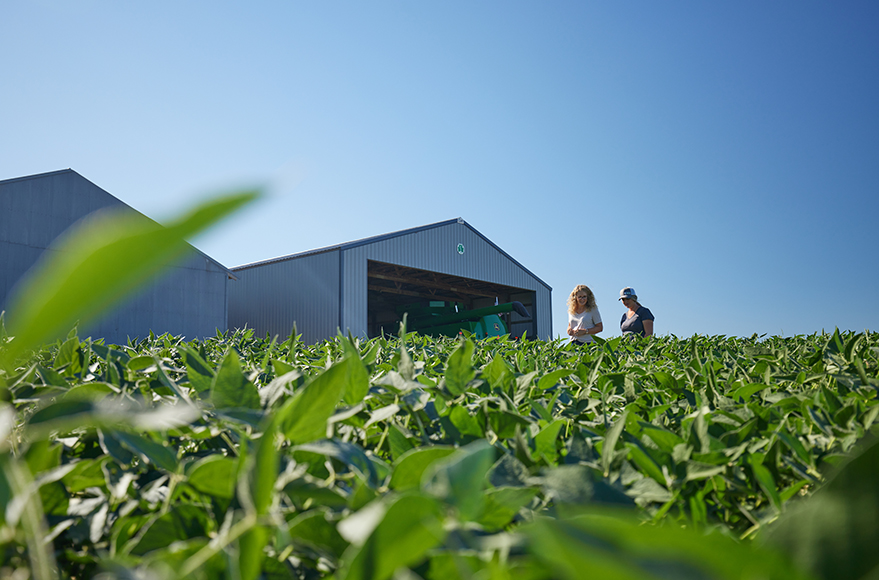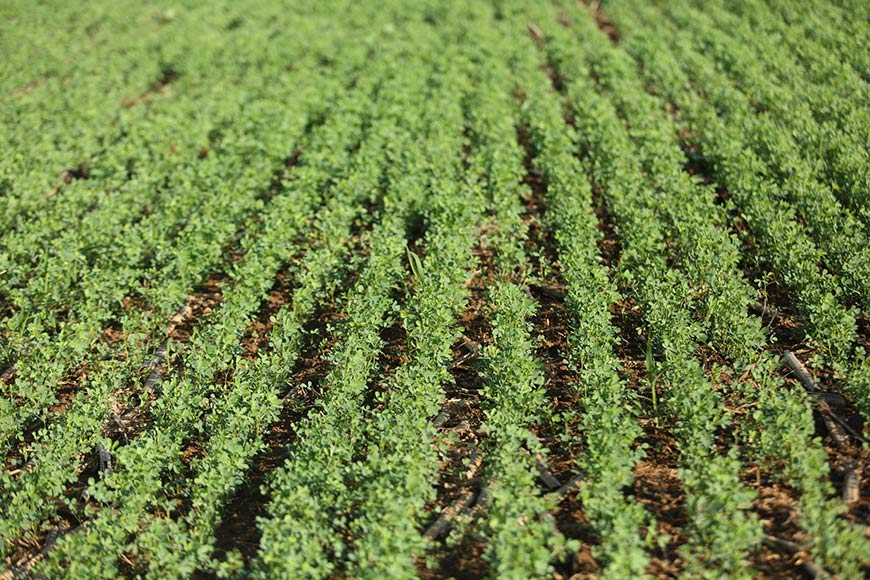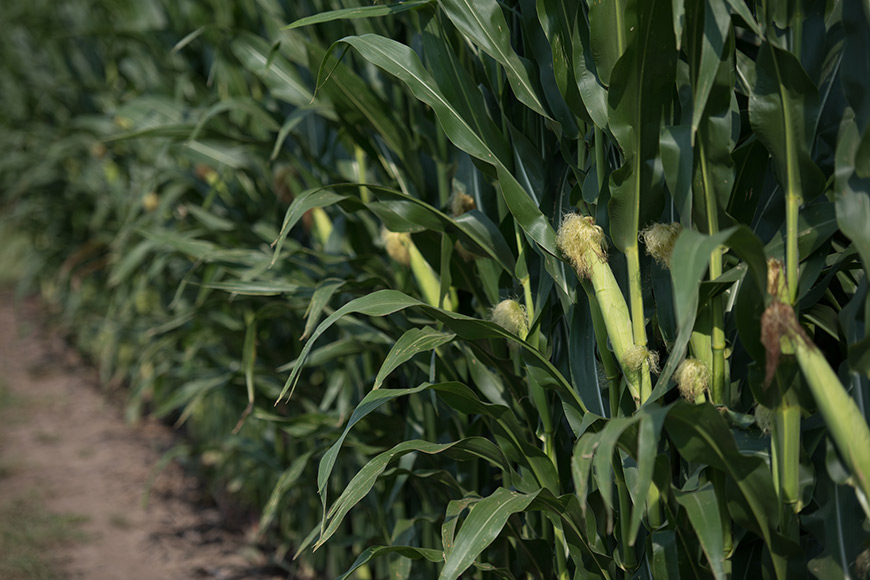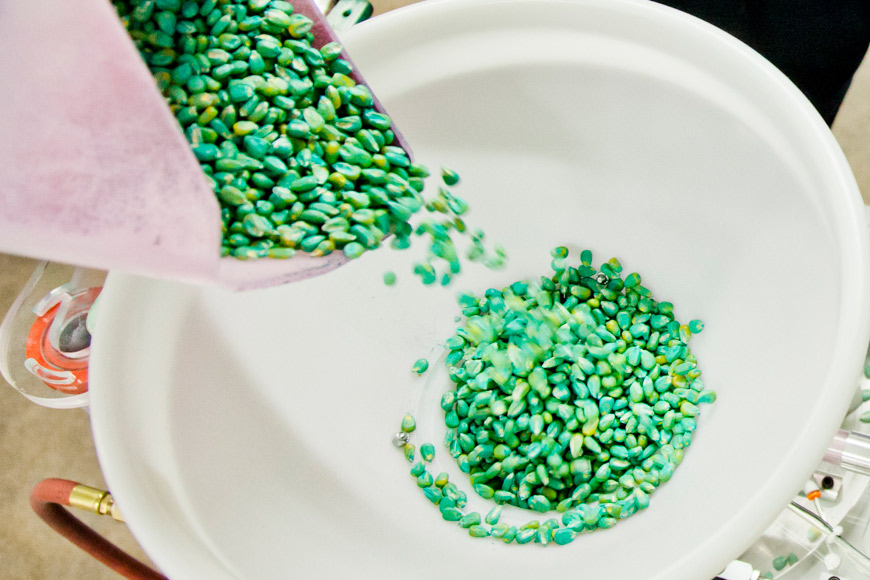Sorghum Provides Flexible Forage Options
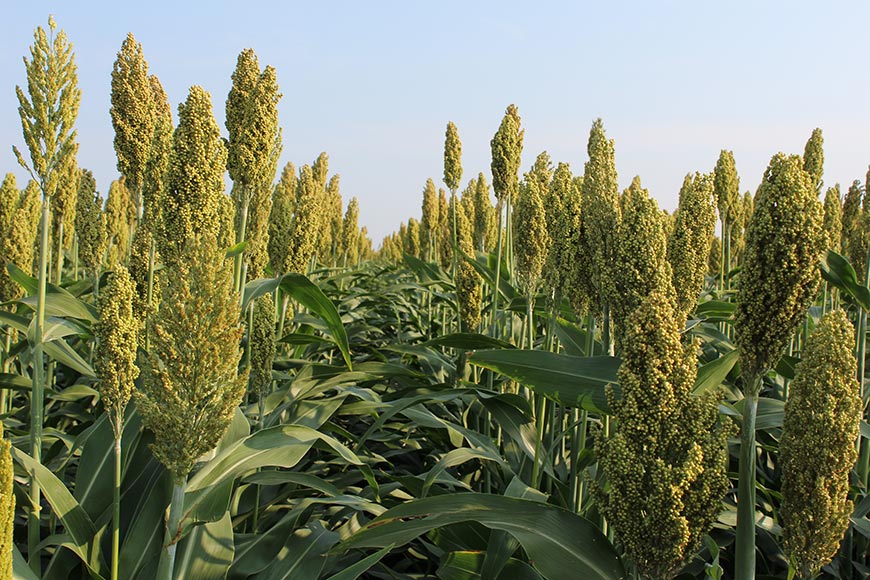
Dry environments and high-producing forages don’t usually mix. But sorghum offers some exceptional opportunities. In fact, it’s one of the most efficient ways I can think of to grow the most dry matter in an annual crop.
We have a variety of CROPLAN® sorghum products available for forage uses. Depending on your goals and management practices, your local retailer can help you choose the ones best fit for your operation.
Corn or Sorghum? Environment Matters
Under ideal conditions, corn will usually out-yield sorghum crops. My recommendation: If you’re able to grow a really good silage corn crop, you should. But if you have challenging, moisture-stressed ground and a hot climate, you may find that corn doesn’t consistently perform well. That’s the sweet spot for sorghum products. Sorghum is about 30-40% more water-use efficient than a corn plant. This means that in the hot, dry environments common in the West and South, farmers can potentially get equal or better yields from sorghum.
Environment is probably the number-one factor to consider when deciding between corn and sorghum but cost may also come into play. Sorghum can offer significant input savings compared to corn in hot, dry environments. For example, sorghum seed costs significantly less, the basic chemistries that work are inexpensive and sorghum requires less fertilization than corn.
Nutritional Benefits of Sorghum
In a fairly short season, sorghum can quickly convert heat units and sunlight energy into highly digestible dry matter animals can use. The ability to produce large amounts of forage in a short period of time makes sorghum a great option for double-cropping or delayed planting situations.
Nutritionally, the protein content and neutral detergent fiber (NDF) digestibility of the sorghum and corn silage are similar. However, sorghum silage tends to be about 15 percentage units higher in NDF content, causing it to be more “rumen filling” by weight than corn silage, which could reduce total diet intake if sorghum silage is fed at the same amount as corn silage.
Sorghum silage also contains approximately 15 percentage units less starch than corn silage on average. This causes sorghum silage to have somewhat less metabolizable energy and rumen degradable starch than corn silage, making it an excellent feed source for growing heifers or brood cows by keeping them feeling full longer without requiring higher quantities of food. If the additional starch is needed, say for feedlot cattle, supplementing the starch difference with starchy ingredients, such as corn, milo or hominy is an effective option.
Forage Sorghum: Single-cut, High-moisture Feed
Traditionally the term “forage sorghum” has been a catch-all phrase for the different sorghum products used for feed or forage. A true forage sorghum generally has little regrowth potential, making it ideal for single-cut, high-moisture harvest situations such as baleage or silage. Its large, succulent, sweet stalks make good silage, but drydown can be challenging for making hay.
Historically, farmers have planted forage sorghum at high populations to keep stems thin and more digestible for their herds. New products, including both conventional and brown midrib sorghum varieties, are bred using the latest traits and technology to optimize digestibility. If you’re used to planting forage sorghum at 15 pounds per acre, you’ll find that with new products, the planting population can be cut to 5 pounds per acre while obtaining the same high-quality feed without sacrificing yield. Lowering the planting rate due to improved genetics also reduces the risk of lodging and enhances standability.
Sorghum Sudangrass: Multiple-cut, Flexible Feed
Another option is a sorghum sudangrass (SxS) hybrid. As the name implies, this is a breeding cross between forage sorghum and sudangrass. The result is a plant with relatively smaller stems and more regrowth potential than forage sorghums. The rapid regrowth ability of SxS hybrids makes it an ideal product for multiple-cut production systems. These hybrids are typically planted at higher populations than traditional forage sorghum, so there is more flexibility to make dry hay, baleage or graze.
To get the most from SxS hybrids, agronomic experts say that the first cutting should come 40 days after planting or when the crop reaches 40 inches in height, whichever comes first. Whether you plan to make hay or graze, this rule works. As soon as the plant gets to be 18 inches tall, grazing can begin. If you plan on cutting for dry hay, the 40-inch/40-day rule for the first cutting gives you a manageable window for drydown prior to baling. After the first cutting, you should be able to graze or cut again every 30 days until the first hard frost. Be sure to leave at least two nodes above the ground to increase regrowth potential.
As an SxS hybrid matures, the rate of growth slows. If you wait longer than 30 days between cuttings, quality may be compromised. By cutting an SxS hybrid more frequently, you get a higher quality crop and the potential to increase yield over a one-cut SxS system. Adding a sorghum sudangrass hybrid to your forage plan allows more versatility in harvest method and/or feeding purpose due to the flexibility of not being tied to one system. In a cow/calf situation where a higher moisture feed may be needed, SxS products come in handy.
Sudangrass: Excellent Regrowth, Dry Feed
Similar to SxS hybrids, sudangrass hybrids offer excellent regrowth potential and are another option for farmers looking to employ a multi-cut harvest strategy. These products generally have a finer stem than SxS hybrids, which results in better drying characteristics than other sorghum types. Sudangrass can be grazed, green chopped or cut for hay. Management is similar to SxS hybrids, and the 40-inch/40-day rule for the first cutting still applies to sudangrass hybrids.
Leverage New Technology
Sorghum breeders continue to research ways to improve yield and quality for farmers. Most farmers are familiar with BMR sorghum, a natural genetic mutation to produce a plant with lower lignin concentrations. The result is a significant increase in whole-plant digestibility, higher dry matter intake and increased feed efficiency.
Breeders are also using marker-assisted selection methods to identify traits for higher quality and higher tonnage potential. This method can give farmers product options other than BMR or conventional. This third sorghum trait choice has an improved quality profile compared to conventional products but without some of the extra management requirements that can be present with BMRs.
Herbicide tolerance is also being introduced in forage sorghums and sorghum sudangrass products to help enhance weed control programs. Varieties offering a prussic acid free component are entering the market as well, allowing producers to graze sorghum sudangrass into stress periods or frost events without risk of prussic acid poisoning.
Work with your local CROPLAN forage specialist to determine which products can help meet your ROI, production and feeding goals.
All photos are either the property of WinField United or used with permission.
© 2023 WinField United. Important: Before use always read and follow label instructions. Crop performance is dependent on several factors many of which are beyond the control of WinField United, including without limitation, soil type, pest pressures, agronomic practices and weather conditions. Growers are encouraged to consider data from multiple locations, over multiple years and to be mindful of how such agronomic conditions could impact results. CROPLAN and WinField are trademarks of WinField United. All other trademarks are the property of their respective owners.



